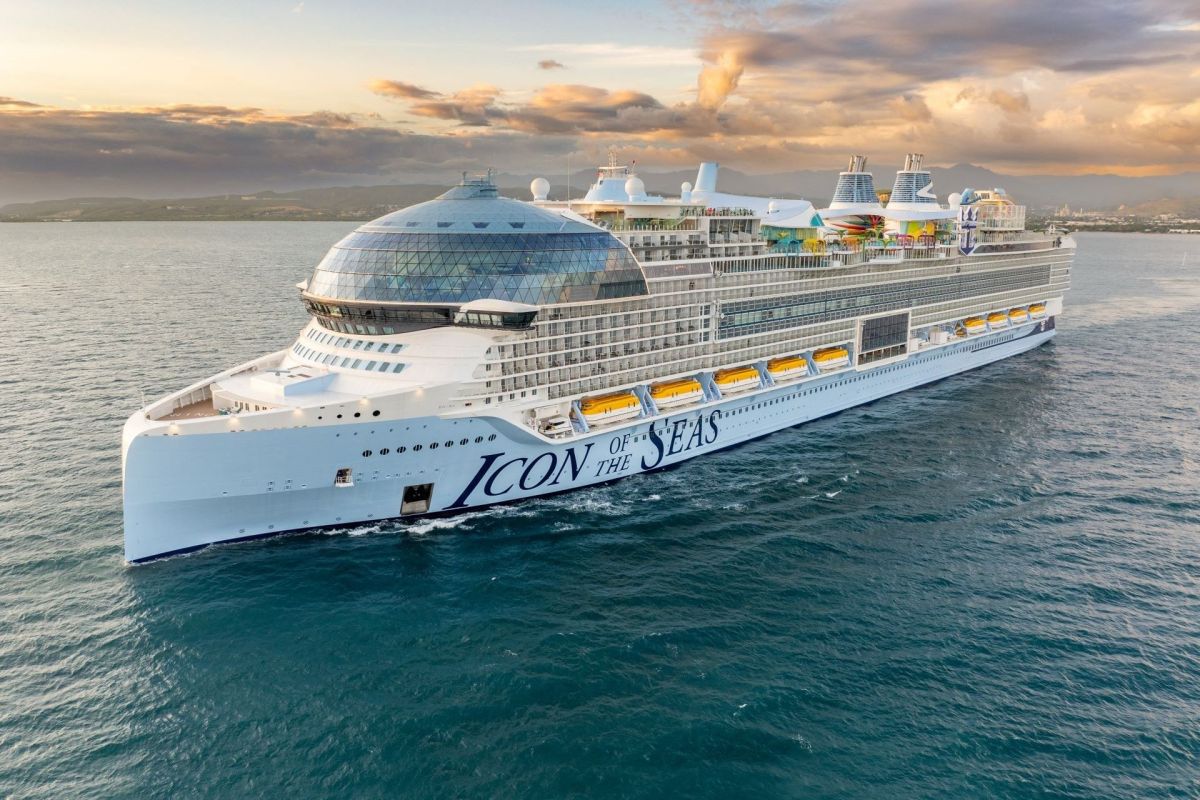On Jan. 23, Royal Caribbean unveiled its Icon of the Seas — a 1,200-foot long, 250,800-ton boat that tops the list of the largest cruise ships to hit the open waters.
The $2 billion vessel, which embarked on its initial voyage on Jan. 27, has a maximum capacity of just under 8,000 people and boasts eight neighborhoods, 2,800 rooms, seven pools, and over 40 restaurants, bars, and entertainment venues.
While the ship and its advanced eco-friendly features push the company closer to its goal of achieving a net-zero-pollution cruise ship by 2035, the sheer size and resources required to maintain the Icon of the Seas have drawn plenty of ire from environmentalists.
"We live by one single philosophy, which is to deliver the best vacations responsibly," Nick Rose, the vice president of environmental stewardship at Royal Caribbean Group, said. "And to do that we build with the core principles of sustaining our planet and communities."
It's the first ship to use liquified natural gas, which the Cruise Lines International Association claimed is "currently the fossil fuel available at a scale that has the best performance in reducing atmospheric emissions."
LNG produces 25% less carbon dioxide than standard marine fuel, but research from the United Nations' International Maritime Organization found that a 30% uptick in the use of LNG for global shipping from 2012 to 2018 caused over 150% more potent methane pollution.
Even Rose acknowledged that LNG is not a long-term solution and that the company "built the ship to make it adaptable to future fuel sources."
The Icon of the Seas was also designed to rely on shore power electricity while docked at ports and utilize fuel cells to power things like air conditioning and elevators. Both features are more ideological than practical at this point, though — just 2% of the world's ports offer shore power electricity for cruise ships, and the fuel cells have yet to be implemented after the manufacturers of the batteries encountered issues with the size and scope of the installation.
However, the ship has what the company says is the first-ever waste management system that converts food, biowaste, and cardboard waste into energy via microwave-assisted pyrolysis. The technology turns the waste into pellets and biochar, the former of which can be used to create steam energy to operate the ship's water park, while the latter can be used as fertilizer.
The Icon of the Seas also has a water treatment system that removes contaminants through reverse osmosis, producing 93% of the freshwater on the ship.
Marcie Keever, director of the Oceans and Vessels Program at the environmental organization Friends of the Earth, gave credit where credit is due.
"They're installing the most expensive and best sewage treatment technology on their ships, and it's important because they are the biggest cruise line and are showing the industry that they can do it, pay for it, and they should," she said.
Nonetheless, Keever believed the mere existence of the Icon of the Seas contradicts any goals of sustainability that the Royal Caribbean has.
"The ships are getting bigger and bigger, and that is the wrong direction for the cruise industry to be going," she said. "If you were really thinking about sustainability and not your bottom line, you would not be building a cruise ship with a capacity of nearly 10,000 people."
Join our free newsletter for cool news and actionable info that makes it easy to help yourself while helping the planet.









